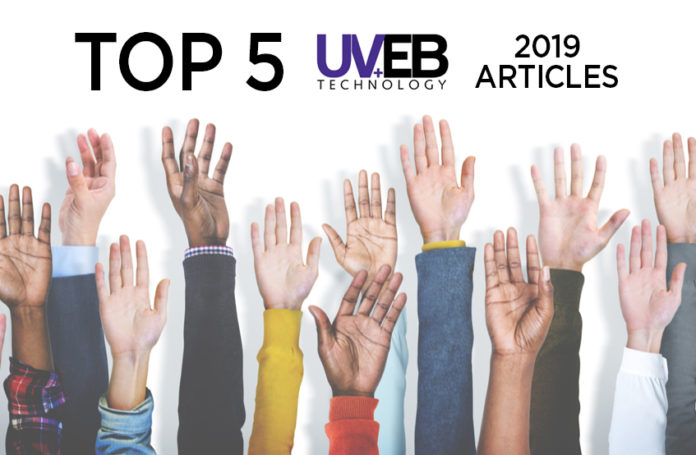While work on the first issue of 2020 is well underway, we paused to see which UV+EB Technology articles from 2019 caught the eyes of our readers. The following five articles were the top reads from 2019 for visitors to the website.
1. State of UV LED Curing Applications
The list of viable UV LED applications continues to grow – as does the number of system suppliers, formulators and OEM machine builders supporting those applications. This ongoing increase in activity bodes well for the general market direction of UV LED technology. As a result, those who aren’t already investigating its suitability for their own curing needs may find it is time to start.
2. New UV-Curable Polyurethane Dispersion for Fast Flash-Off and Good Physical Drying
In this study, researchers evaluated key properties of UV polyurethane dispersions (PUDs), such as chemical resistance, scratch resistance and adhesion, especially focusing on physical drying and drying time of water, which are closely related to productivity and energy saving.
3. New UV LED Technologies for Carbon-Fiber Reinforced Polymers
Dual-cure initiating systems have emerged as promising alternatives to perform fast and on-demand curing of thick polymers. In this paper, a system based on pyrylium salt as photoinitiator and a hydroperoxide or a vinyl ether as coinitiator is reported to be efficient in the polymerization of epoxide resins. The chemical mechanisms involved are studied by spectroscopic methods. It is found that the interaction between pyrylium salts and coinitiator releases a proton that could initiate the polymerization reaction at room temperature as well as under UV or LED.
4. Adhesion Enhancement of UV-Cure Inks onto Polymers by Gas-Phase Plasma Pretreatments
Gas-phase plasma technologies solve inkjet adhesion problems associated with low surface energy and heat-sensitive polymers. This article examines plasma science and the interaction mechanisms between a plasma and polymer surface, and also debunks common mythologies.
5. UV LED Low-Migration Laminating Adhesives for Flexible Packaging
The global flexible packaging market continues to evolve as shifts in consumer preference lean more toward convenience in single-serve or grab-n-go options, extended shelf life and sustainability. In addition to consumers driving innovation in flexible packaging, wide web and narrow web converters are beginning to converge into the packaging space as they see increased opportunity in equipment and coating technologies, thereby lowering the barrier to entry.







